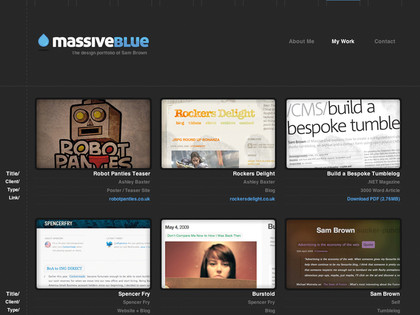How to run a one-person web design agency
How to pitch, design and deliver - on time and on budget

We're lucky enough to work in an industry where resources are seemingly endless. Books, magazines and online articles are readily available to offer hints, tips and advice about working with the web and all that comes with it.
There's no shortage of knowledge to be found on the subjects of design, development, project management and freelancing. However, I've always had a problem with many of these resources.
It's not that they're wrong, just that they're so often aimed at studios that much of the 'best practice' advice is irrelevant to independent designers, whose clients' budgets rarely stretch to include time for thorough research, a variety of design options and usability testing for the completed site.
Even my own book (Sexy Web Design, published earlier this year by SitePoint) talks about web design projects in an ideal world. The harsh reality is that us freelancers often have to cut corners. This is not out of choice, but because projects usually have a smaller scope than those taken on by large agencies.
It's not just the unknowns that struggle: many 'big name' designers face the same problems, simply because projects created by one person take on a different shape than those created by a team.
So let's look at how a one-man-band achieves a great working life. "Knowing yourself, working hard, playing even harder and being able to quickly switch between different tasks is a start," says Tim Van Damme.
Making introductions
Sign up for breaking news, reviews, opinion, top tech deals, and more.
"The best way to get good work is to produce good work. The better work you create, the more people will want to work with you," says Ian Coyle. Whether you have to pitch for clients, actively seek them out or find that they come to you, the initial communication with your new or potential client should always have the aims of impressing them and making them feel excited about working with you.

IAN COYLE: Ian Coyle's recent site for Luigi Bormioli mixes classic chic with JavaScript goodness
For Sam Brown, it's about personal branding. "The perfect client is someone who wants to work with me because they've heard about me, perhaps via word of mouth or a link on a site design they loved," he says. "It's really not about being the number one link on Google for 'web designer'."
When working with a solo designer, there's an extra element that clients are looking for: your personality. Unlike an agency, everything that happens with a one-man business is going to go through you. This has a major advantage for the client: they get a more 'hands on' approach and a direct relationship with the person doing the nitty-gritty work, but this also means that you need to get along and communicate well.
So, while it's important to assure your client that you're a consummate professional, it's equally important to be friendly and open. Show them that you're happy to chat, happy to discuss different directions and generally pleased to be working on their project. "Good communication really is the key to a successful project," enthuses Sam Brown.

SAM BROWN: Sam Brown is a forward-thinking designer who runs the one-man studio Massive Blue